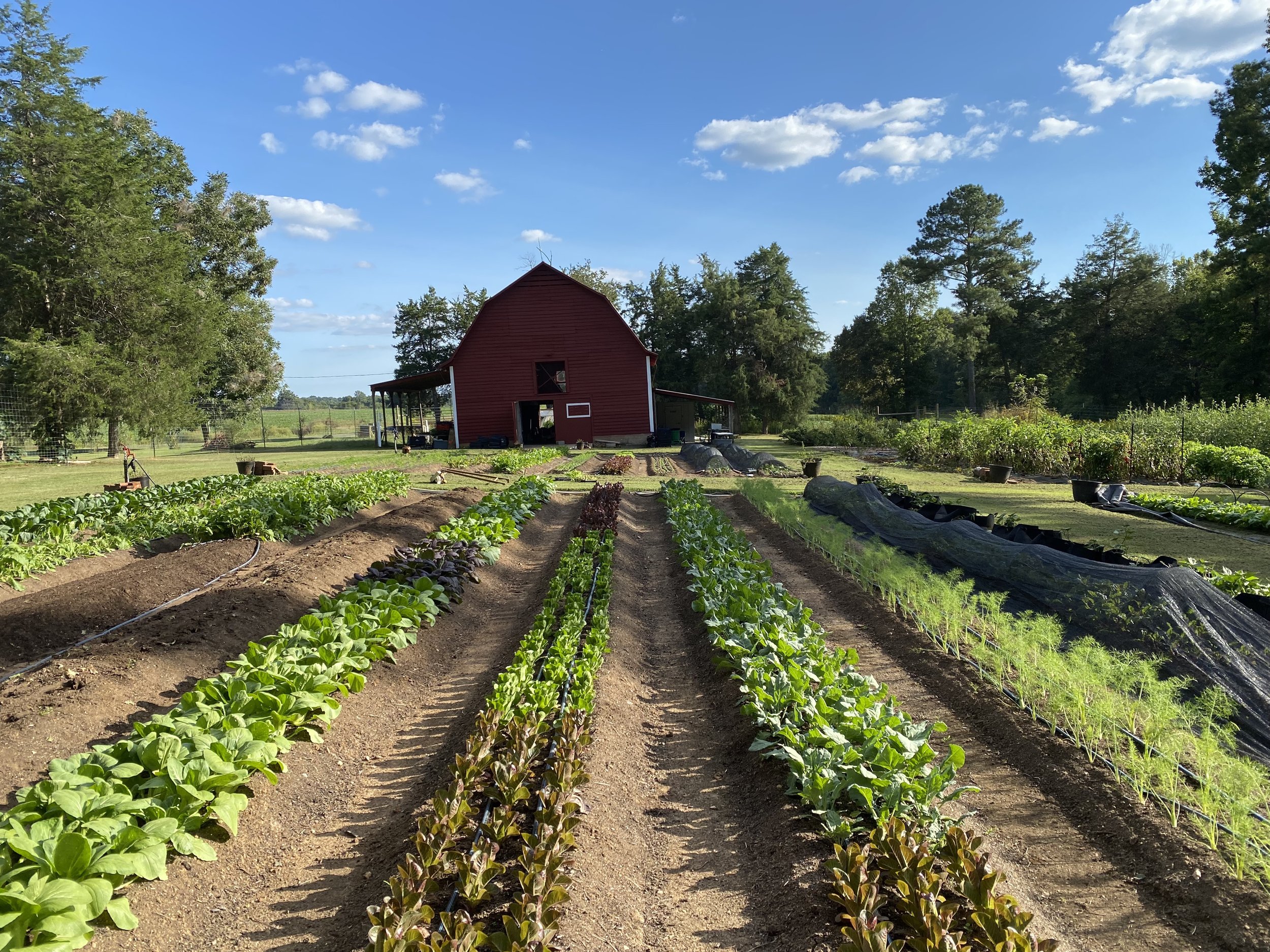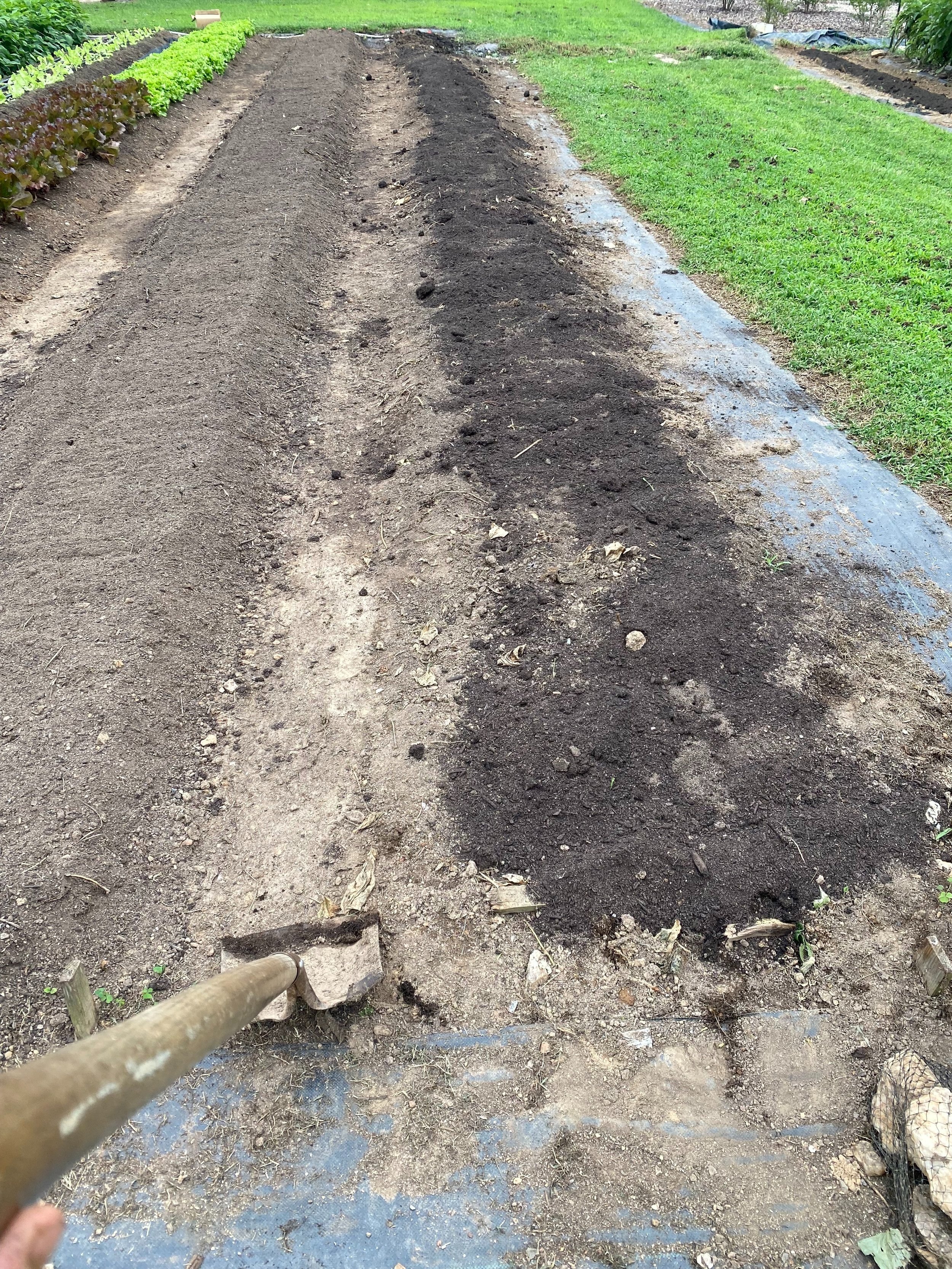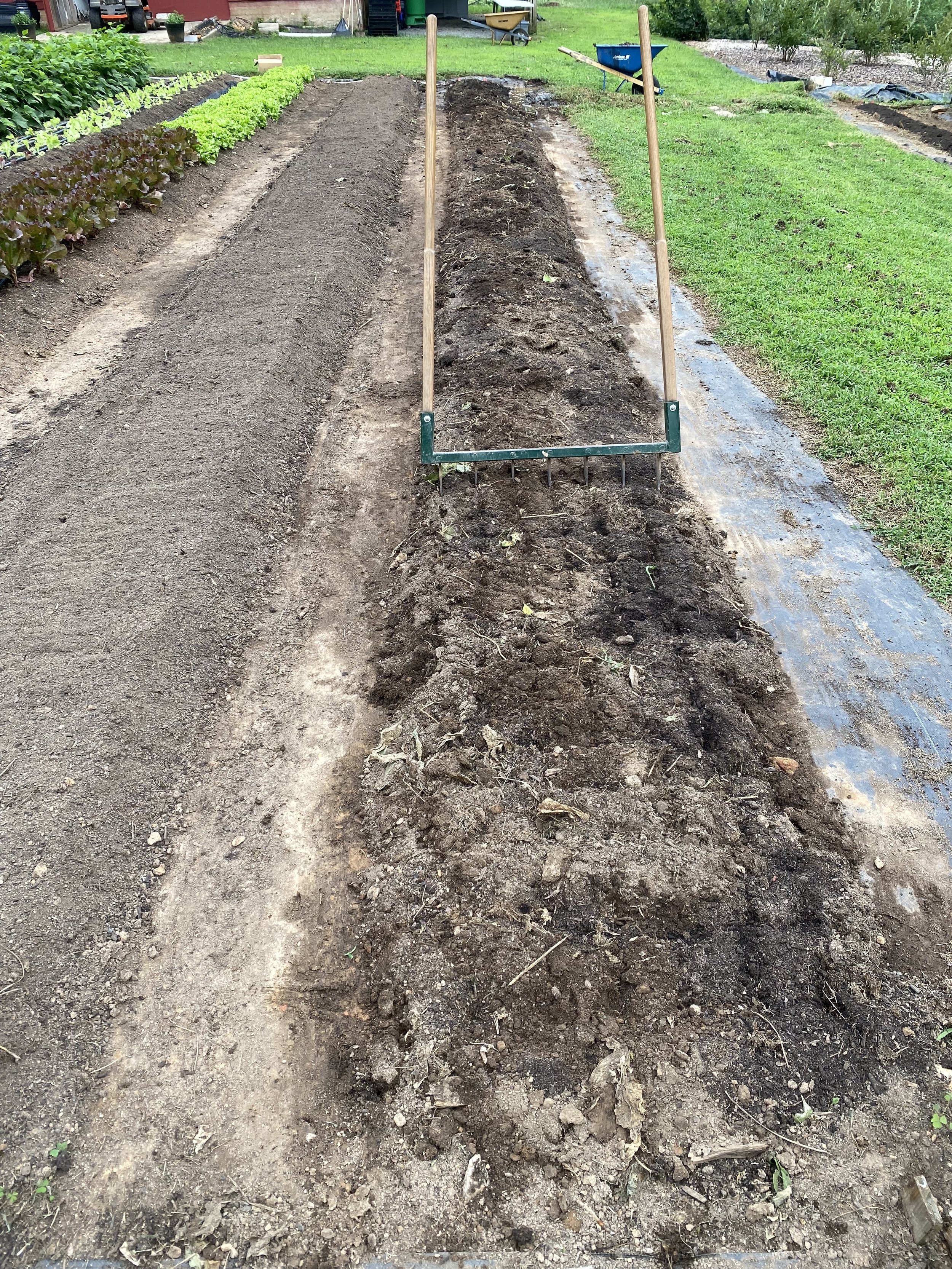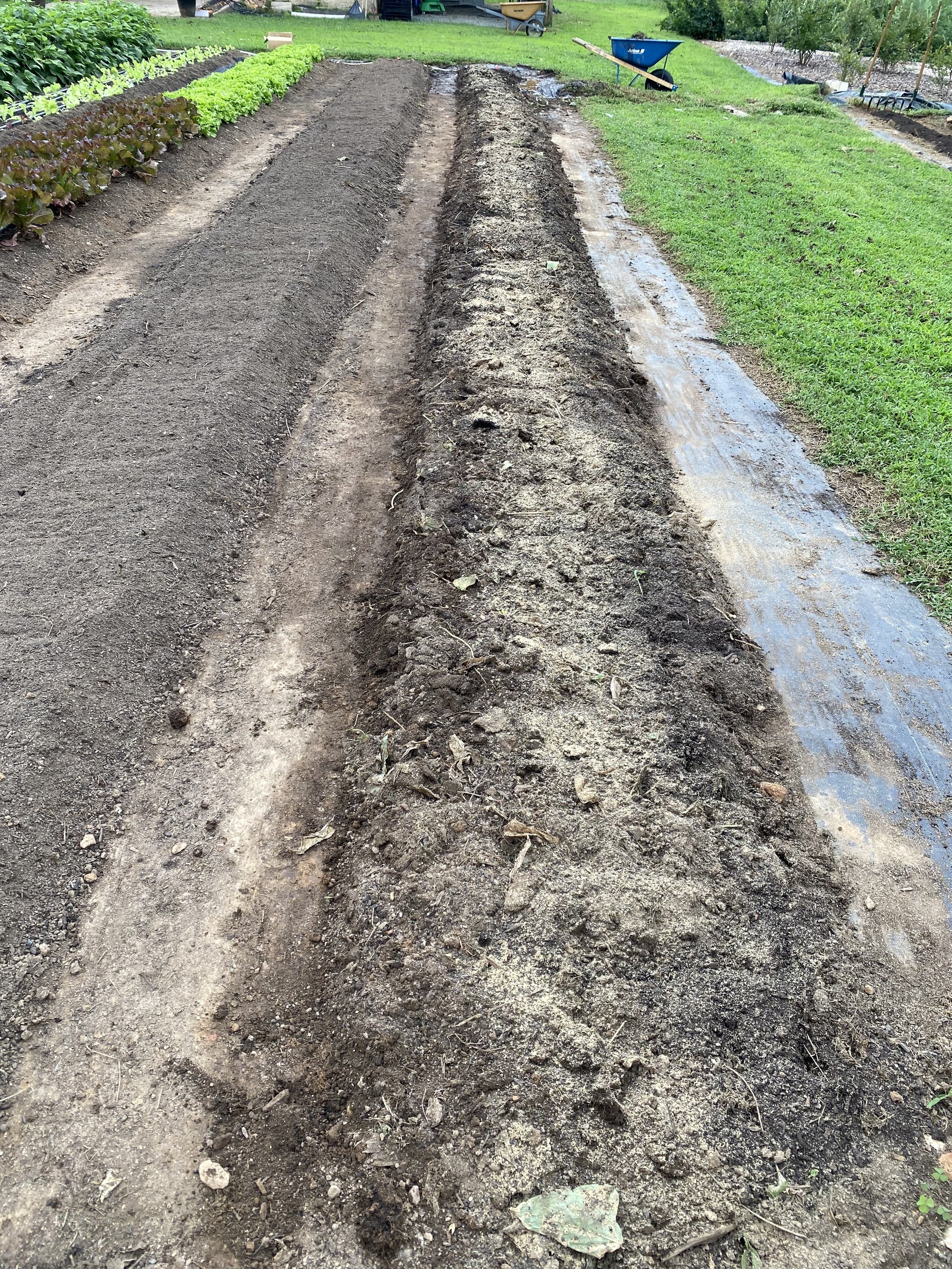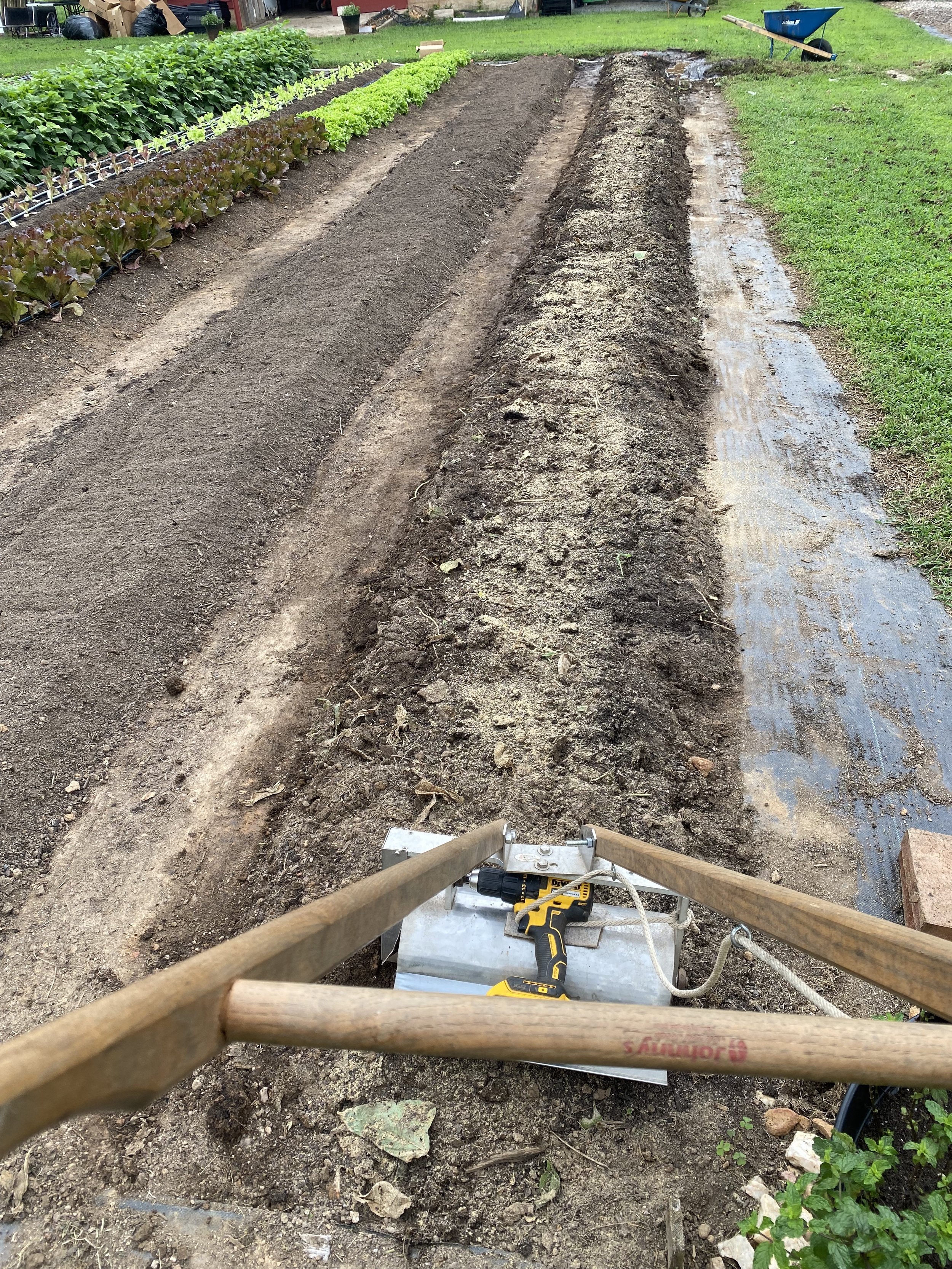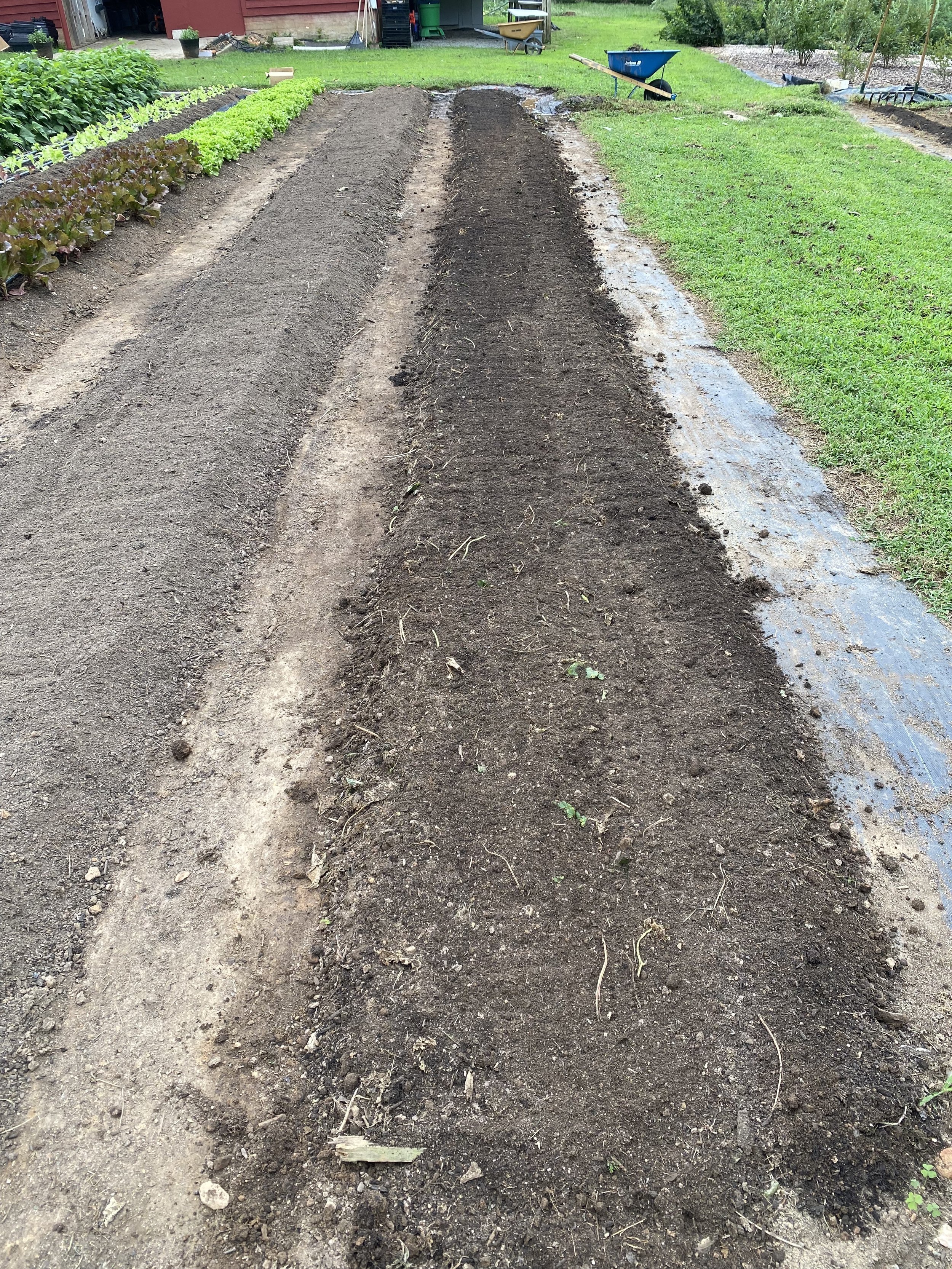Farm Notes
It’s really starting to feel like fall around here! Suddenly it’s dark by 7:45pm, which forces me to head inside and stop working, after being used to getting lots of things done outside in the evenings after Sawyer goes to bed. While the shorter days mean I don’t get quite as much accomplished, I’ll be honest that I’m actually grateful that Mother Nature is forcing me to slow down, come inside, and actually eat dinner before 8pm!
Last week we celebrated Sawyer’s first birthday with family and friends, and it was the most wonderful, joy-filled weekend. Over the past year, Sawyer has taught us so much – first and foremost, he’s taught us how to be parents (no joke, I had never changed a diaper before he was born..), but also how to be more patient, how to see the world with truly open eyes, and how to be silly + laugh without abandon. I’m definitely still figuring out how to balance being a mom and wife and farmer/small business owner, but it feels pretty awesome to have made it through the first year milestone, and I thank my lucky stars every day that I get to be Sawyer’s mom. :)
All the fall veggies are loving the cooler temperatures, while our summer tomatoes/peppers/eggplant/okra are singing their final swan song. Unfortunately, I’ve yet to catch the groundhog that seems bound and determined to eat all our brassicas, so I’ve had to resort to covering all our baby plants 24/7 with row cover (see photo below) to keep them from getting eaten. I’ve also been battling with moles, who apparently have a sweet tooth for fennel (see photo below)… moles are notoriously hard to get rid of, and I’m just hoping that I’ll still have fennel left for our CSA members before the moles get to them all!
Covering our plants to keep the groundhogs away…
…and apparently moles love fennel?!
Now that we’re in the second half of September (how did that happen?!), the majority of our fall crops are in the ground, though we are still planting successions of lettuce, arugula, baby kale, radishes, and turnips to keep us rolling in greens through the end of the year. So depending on the climate where you live (ie how soon your first frosts arrive), there is still time to get some more fall veggies in the ground! Not sure what your average first frost date is in your area? Here’s a great website where you can enter your zip code and find out average frost dates for your area.
For a full tour of what’s growing here at the farm, I just took y’all on a virtual farm walk – tune in via Facebook HERE, or via our shared google drive HERE.
PS – Many of you have asked for a health update… I’m very glad to report that the issues I was having with my left ear have improved significantly since my last update. I had a follow-up with my ENT doctor this week, and while my hearing isn’t fully restored (I still can’t hear low frequencies in my left ear), overall the ringing and pressure have pretty much gone away. There’s a chance that I may have a condition that is causing a fluid imbalance in my inner ear, which I’d need to regulate through diet, stress management, etc – but for now, I’m taking it one day at a time and just grateful to be feeling so much better… thanks for all the kind words and messages! :)
Kitchen Notes
If you’re never exactly sure what to do with shishito peppers (or any kind of frying pepper like padrons, habanadas, etc) THIS is my go-to recipe/method. All you gotta do is get a skillet nice and hot, and blister those puppies with some oil + salt + a little garlic and lemon (and a dusting of parmesan if you’re feeling extra). It all comes together in literally 5 minutes, and this makes for a finger-licking appetizer or awesome veggie side.
Blistered Shishito Peppers with garlic & Parmesan cheese
INGREDIENTS
1/2 pound (3-4 cups) shishito peppers (or other frying pepper of choice), stems on
1 tablespoon vegetable oil
2 cloves garlic
2 tablespoons lemon juice
Salt, preferably flaky sea salt or kosher salt, to taste
Freshly grated parmesan cheese (optional, but highly recommended)
PREPARATION
In a large bowl, toss the peppers with 1 tablespoon vegetable oil.
Heat a 12” skillet over high heat until it’s nice and hot (so hot water should sizzle), then add the peppers and a hefty pinch of kosher salt and let them cook in a single layer undisturbed for 2-3 minutes until nice and blistered on the bottoms. Toss and cook for another 2 minutes until blistered all around and tender.
Remove the skillet from the heat and add the minced garlic and lemon juice – it will sizzle! Stir to incorporate the garlic in the juice and to coat the peppers. Taste and add additional salt if needed.
Transfer the peppers to a serving plate and sprinkle with some freshly grated parmesan, a little flakey sea salt + extra lemon if desired. Enjoy!
Today’s Stats
Low temp: 46F
High temp: 71F
Sunrise: 7:06am
Sunset: 7:12pm
Moon phase: Waning Crescent
Additional notes: Clear and cool

